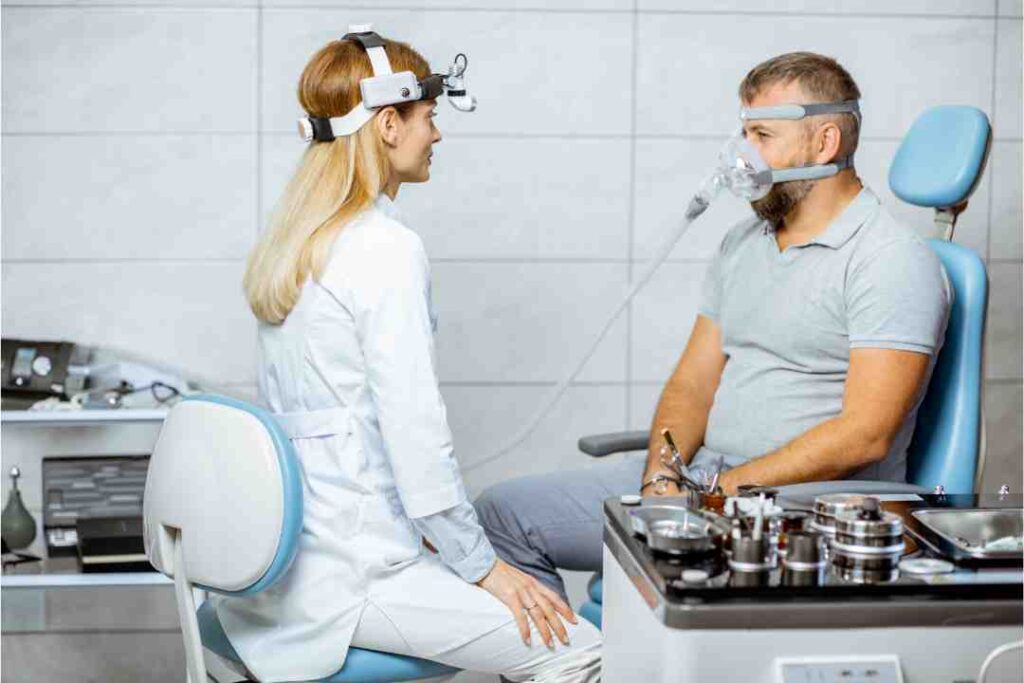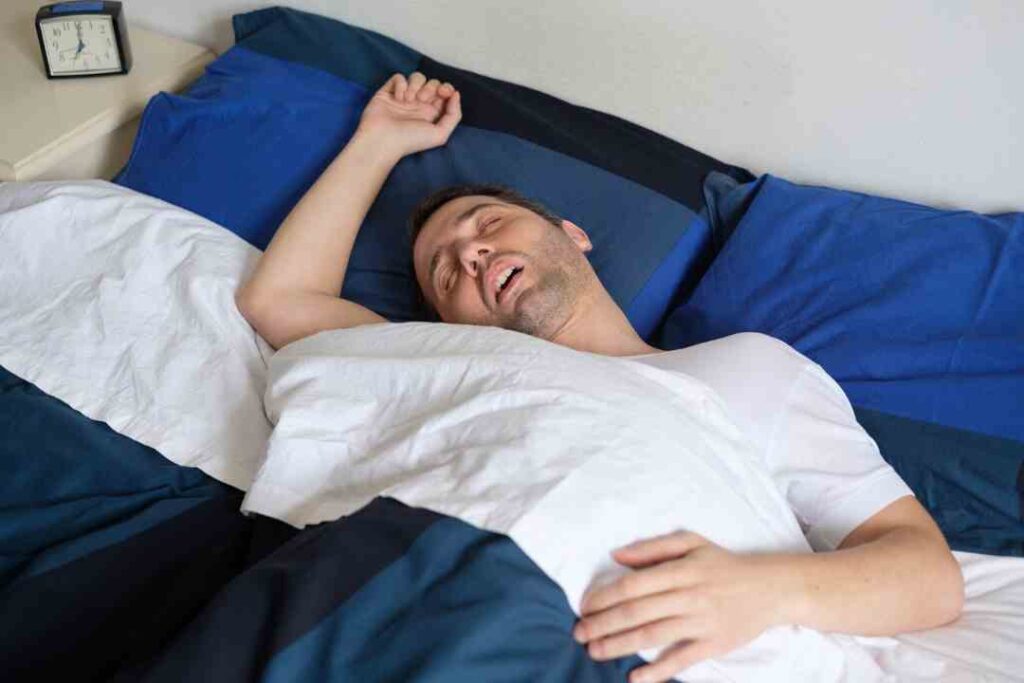Sleep apnea is a common sleep disorder that affects millions of people worldwide. It is characterized by pauses in breathing during sleep, which can lead to daytime tiredness and other health problems. CPAP machines are often recommended as a treatment option for sleep apnea, and there are two main types to choose from: traditional CPAP machines and the innovative AirMini. In this article, we will explore the differences between these two options to help you determine which one suits you best.
Understanding Sleep Apnea and the Need for CPAP Machines
Sleep apnea is a condition where the airway becomes partially or completely blocked during sleep, leading to interrupted breathing patterns. This can cause oxygen levels in the blood to drop and result in various symptoms like snoring, gasping for air, and daytime fatigue.
Imagine lying in bed, trying to get a good night’s sleep, only to be constantly jolted awake by your own snoring or sudden gasps for air. This is the reality for millions of people who suffer from sleep apnea. It’s not just a matter of feeling tired the next day; sleep apnea can have serious consequences for your health.
The primary goal of using a CPAP masks Australia is to keep the airway open during sleep. By delivering a constant flow of pressurized air through a mask, CPAP machines help maintain normal breathing patterns and ensure adequate oxygen supply. This simple yet effective solution has revolutionized the treatment of sleep apnea.
What is Sleep Apnea?
Sleep apnea is a sleep disorder characterized by repetitive pauses in breathing or shallow breaths during sleep. These pauses can last several seconds or longer and occur multiple times throughout the night. Sleep apnea can be categorized into three types: obstructive sleep apnea (OSA), central sleep apnea (CSA), and complex sleep apnea syndrome (CSAS).
Obstructive sleep apnea (OSA) is the most common type and occurs when the muscles in the back of the throat fail to keep the airway open. This can be due to factors such as obesity, enlarged tonsils, or a naturally narrow airway. Central sleep apnea (CSA), on the other hand, is caused by a failure of the brain to send proper signals to the muscles that control breathing. Complex sleep apnea syndrome (CSAS) is a combination of both obstructive and central sleep apnea.

It’s important to understand the different types of sleep apnea because the treatment approach may vary depending on the underlying cause. However, regardless of the type, CPAP machines have proven to be an effective treatment option for many individuals.
The Role of CPAP Machines in Treating Sleep Apnea
CPAP machines are the gold standard treatment for sleep apnea. They work by delivering a continuous stream of pressurized air into the airway, keeping it open, and preventing the collapse that causes apneas and hypopneas. This allows for uninterrupted breathing and more restful sleep.
Imagine the CPAP machine as a gentle breeze that keeps your airway open, allowing you to breathe freely throughout the night. The pressurized air acts as a splint, holding the soft tissues in the throat in place and preventing them from blocking the air passage. This not only reduces snoring but also ensures that your body receives the oxygen it needs to function properly. By clicking here, you can read about Facts about the procedure called Cataract Surgery.
By using a CPAP machine consistently, individuals with sleep apnea can experience significant improvements in their sleep quality, daytime alertness, and overall quality of life. They wake up feeling refreshed and energized, ready to take on the day ahead. Moreover, the use of CPAP machines has been linked to a decreased risk of serious health conditions, such as heart disease, stroke, and diabetes, which are associated with untreated sleep apnea.
It’s important to note that finding the right CPAP machine and mask is crucial for optimal treatment. With advances in technology, there are now various options available to suit different needs and preferences. From sleek and compact designs to masks that fit comfortably on the face, CPAP machines have come a long way in terms of usability and effectiveness.
In conclusion, sleep apnea is a common sleep disorder that can have significant impacts on a person’s health and well-being. CPAP machines have emerged as a game-changer in the treatment of sleep apnea, offering a simple yet effective solution to keep the airway open during sleep. By understanding sleep apnea and the role of CPAP machines, individuals can take control of their sleep health and enjoy the benefits of a good night’s rest.
An Overview of Traditional CPAP Machines
Traditional CPAP machines have been used for many years to treat sleep apnea. They consist of a motor, a mask, and a tubing system that delivers pressurized air to the user.
When it comes to treating sleep apnea, traditional CPAP machines have proven to be highly effective. Sleep apnea is a sleep disorder characterized by pauses in breathing or shallow breaths during sleep. These pauses can last for a few seconds to a few minutes and can occur multiple times throughout the night. Traditional CPAP machines work by providing a continuous flow of pressurized air to keep the airways open, preventing these pauses in breathing and ensuring a restful night’s sleep.
How Traditional CPAP Machines Work
Traditional CPAP machines work by drawing in room air, pressurizing it to the required level, and then delivering it through a mask that covers the nose and/or mouth. The pressure is constant throughout the night and is set by a sleep specialist based on the individual’s needs.
The motor of the CPAP machine is responsible for generating the necessary airflow. It draws in room air through a filter, removing any impurities, and then passes it through a humidifier to add moisture. The pressurized air is then delivered through a tubing system that connects the motor to the mask. The mask, which can be either nasal or full-face, is securely fitted to the user’s face to ensure a proper seal and prevent air leakage.
One of the key features of traditional CPAP machines is their ability to adjust pressure settings. Sleep specialists carefully determine the optimal pressure level for each individual based on their sleep study results and specific needs. This customization ensures that the air pressure delivered by the CPAP machine effectively keeps the airways open without causing discomfort or excessive airflow.
Pros and Cons of Traditional CPAP Machines
Traditional CPAP machines have several advantages. They are highly effective in treating sleep apnea and are the most commonly prescribed treatment option. Studies have shown that using a CPAP machine can significantly reduce the number of breathing pauses and improve the quality of sleep. By ensuring a continuous flow of pressurized air, CPAP machines help individuals with sleep apnea wake up feeling refreshed and energized.

In addition to their effectiveness, traditional CPAP machines are relatively affordable compared to other sleep apnea treatment methods. They are widely available and covered by many insurance plans, making them accessible to a larger number of individuals.
However, traditional CPAP machines do have some drawbacks. One of the main concerns is their size and portability. The motor, tubing system, and mask can be bulky and cumbersome, making them less suitable for travel and use outside the home. This can be especially challenging for frequent travelers or individuals who lead an active lifestyle.
Another potential drawback of traditional CPAP machines is the comfort level of the mask. While manufacturers have made significant advancements in mask design and materials, some users may still find them uncomfortable. Issues with mask fit and compliance can arise, leading to air leakage and reduced effectiveness of the treatment. It is important for users to work closely with their sleep specialist or CPAP supplier to find a mask that provides a secure and comfortable fit.
Despite these limitations, traditional CPAP machines remain a popular and effective treatment option for sleep apnea. Ongoing advancements in technology are continually improving the comfort, portability, and overall user experience of CPAP machines, making them an essential tool in managing sleep apnea and improving overall sleep quality.
Introducing the AirMini: A Revolution in Sleep Apnea Treatment
The AirMini is a compact and lightweight CPAP machine that offers a new level of convenience for sleep apnea patients. Designed with travel and portability in mind, it provides a seamless sleep apnea treatment experience. Visit https://asthma.org.au/about-asthma/understanding-asthma/asthma/ to get the information about WHAT IS ASTHMA?
Features of the AirMini
The AirMini is incredibly small and weighs just a fraction of traditional CPAP machines. It can easily fit into a carry-on bag or backpack, making it ideal for frequent travelers or individuals who need a CPAP machine on the go.
Despite its compact size, the AirMini offers advanced features such as humidification, mask compatibility, and auto-adjusting pressure settings. These features ensure optimal comfort and effective treatment during sleep.
Benefits of Using the AirMini
AirMini’s portability and convenience are its greatest advantages. With the AirMini, you can maintain your sleep apnea treatment regimen even when you’re away from home. Whether you’re traveling for work or leisure, you can enjoy the benefits of uninterrupted sleep and wake up feeling refreshed and energized.
Comparing AirMini and Traditional CPAP Machines
When deciding between AirMini and traditional CPAP machines, there are several factors to consider. Let’s take a closer look at some key differences:
Size and Portability
The most noticeable difference between the AirMini and traditional CPAP machines is their size. Traditional CPAP machines can be bulkier and heavier, making them less convenient for travel. On the other hand, the AirMini’s compact design is perfect for individuals constantly on the move.
Comfort and Ease of Use
Both the AirMini and traditional CPAP machines offer effective therapy, but comfort and ease of use may vary. Traditional CPAP machines have a wide range of masks available, allowing you to find the most comfortable fit for your needs. The AirMini’s smaller size may limit mask options, but it compensates with innovative features like automatic pressure adjustment for added convenience.
Cost Comparison
When it comes to pricing, traditional CPAP machines are generally more affordable. However, it’s essential to consider additional costs such as maintenance, replacement parts, and accessories. The AirMini, despite its higher initial cost, may offer long-term savings due to its built-in humidification system.
Making the Choice: Which One Suits You Best?
Choosing the right CPAP machine depends on your specific needs and lifestyle. Consider the following factors when making your decision:
Considerations for Choosing the Right CPAP Machine
Think about your travel requirements, need for comfort, level of convenience, and overall budget. If you frequently travel or need a compact solution, the AirMini may be the better option. However, if affordability and a wide range of mask choices are essential to you, a traditional CPAP machine might be a better fit.
Personal Experiences: Stories from Users
Ultimately, the best way to make an informed decision is by considering the experiences of real users. Talk to your healthcare provider and seek testimonials from individuals who have used both traditional CPAP machines and the AirMini. Hearing firsthand accounts can provide valuable insights into what may work best for you.
In conclusion, both traditional CPAP machines and the AirMini offer effective treatment options for sleep apnea. The choice between the two ultimately depends on your specific needs, lifestyle, and preferences. Consider the factors discussed in this article, and consult with your healthcare provider to determine which option suits you best.

